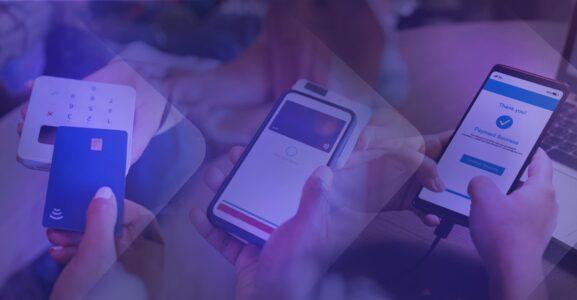When your business starts down the path toward launching a payment card program, one of the first considerations is what types of payments you want to enable. Will the card be configured for use at the point-of-sale (POS) and online? Will you want to be able to push provision your card into digital wallets such as Apple Pay, Google Pay or Samsung Pay?
In this post we examine the different payment “card” types. We put the word card in quotes because many cards in use today aren’t cards in the traditional sense at all. Sure, there are literally tens of billions* of physical plastic cards in use, but there is a growing number of virtual cards being issued that basically serve the same purpose. Additionally, digital wallets present an important and quickly growing way for consumers to use their cards without them physically present.
As you review this information, consider how it can be used when identifying the card issuing platform that’s right for your business. We encourage you to ask the following:
- Will we be able to issue physical and virtual cards? Tokenized cards?
- Will we be able to offer contactless payments?
- Which digital wallets will we be able to support?
- Will we be able to offer whatever physical card configurations we want (e.g., EMV chip, chip and PIN, chip and signature)?
Ultimately, creating the card program that’s right for your business depends on whether your card issuing platform offers the card types you need.
What’s your type
To break it down, a payment card stores data necessary for a merchant to make an authorization request. Whether it is a physical or a virtual card doesn’t matter – they both serve to enable payments.
The Physical Card
Physical cards have a long history and were the go-to payment method for many years. The cardholder can also use them for digital transactions by entering the information into a form, or in some cases scanning the card information. Once the merchant has the card information, they can attempt to complete the transaction.
Cards store multiple pieces of data necessary to complete a transaction, including:
- Cardholder’s name
- Primary account number (PAN), the 16-digit identifier that identifies the card network, issuing bank, and cardholder account
- Expiration date
- Card verification value (CVV2), the three- or four-digit security code used to verify the presence of the card when it’s used for card-not-present transactions
When considering the best card issuing platform for your business, you’ll want to think about how your physical cards are configured. A magnetic stripe is still available in some instances, but many are now thinking about future security requirements and EMV-chip enabled and/or have near-field communication (NFC) for contactless payments (also known as “tap to pay”). Another consideration is whether to require a personal identification number (PIN). If a PIN is required or you opt to enable it, you must provide the cardholder a method of setting the PIN.
The Virtual Card
Virtual cards have become increasingly popular, having been embraced by big financial institutions and digital wallet services like Apple Pay and Google Pay. A virtual card has a unique 16-digit number and functions much like a traditional physical card does, with the ability to use it almost anywhere major credit cards are accepted. However, it offers increased speed, flexibility, and control. Virtual cards can be issued immediately for single or multiple uses and for pre-approved amounts.
When considering the best card issuing platform for your business, be sure to evaluate whether you have the ability to securely display your virtual card along with its PAN, expiration date, and CVV2 in your app using PCI-compliant widgets. There are additional complexities you may want to avoid if you become responsible for handling sensitive card data on your servers.
The Digital Wallet
A digital wallet is a system for storing digitized versions of either physical or virtual payment cards and enabling contactless payments. Marqeta’s 2022 State of Consumer Money Movement found that 71% of U.S. survey respondents reported using a digital wallet within the past 12 months, up from 64% in 2020.
In short, as payment by digital wallet becomes more widely accepted by merchants, the benefits to cardholders will likely increase. Therefore, the ability to push provision your payment card (physical or virtual) into digital wallets will become very important.
Review our guide
Choosing the best card issuing platform for your business could be a full-time job in itself. Just figuring out the criteria for your selection could send shivers down your spine. How do you prioritize factors such as key functionality, service quality, the platform architecture, vendor experience, and pricing, among others?
Marqeta believes your selection should be based on a combination of factors that is most advantageous for you. This is why we’ve developed a guide, “Understanding card issuing platforms.” It can serve as a starting point in creating your request for proposal (RFP).




